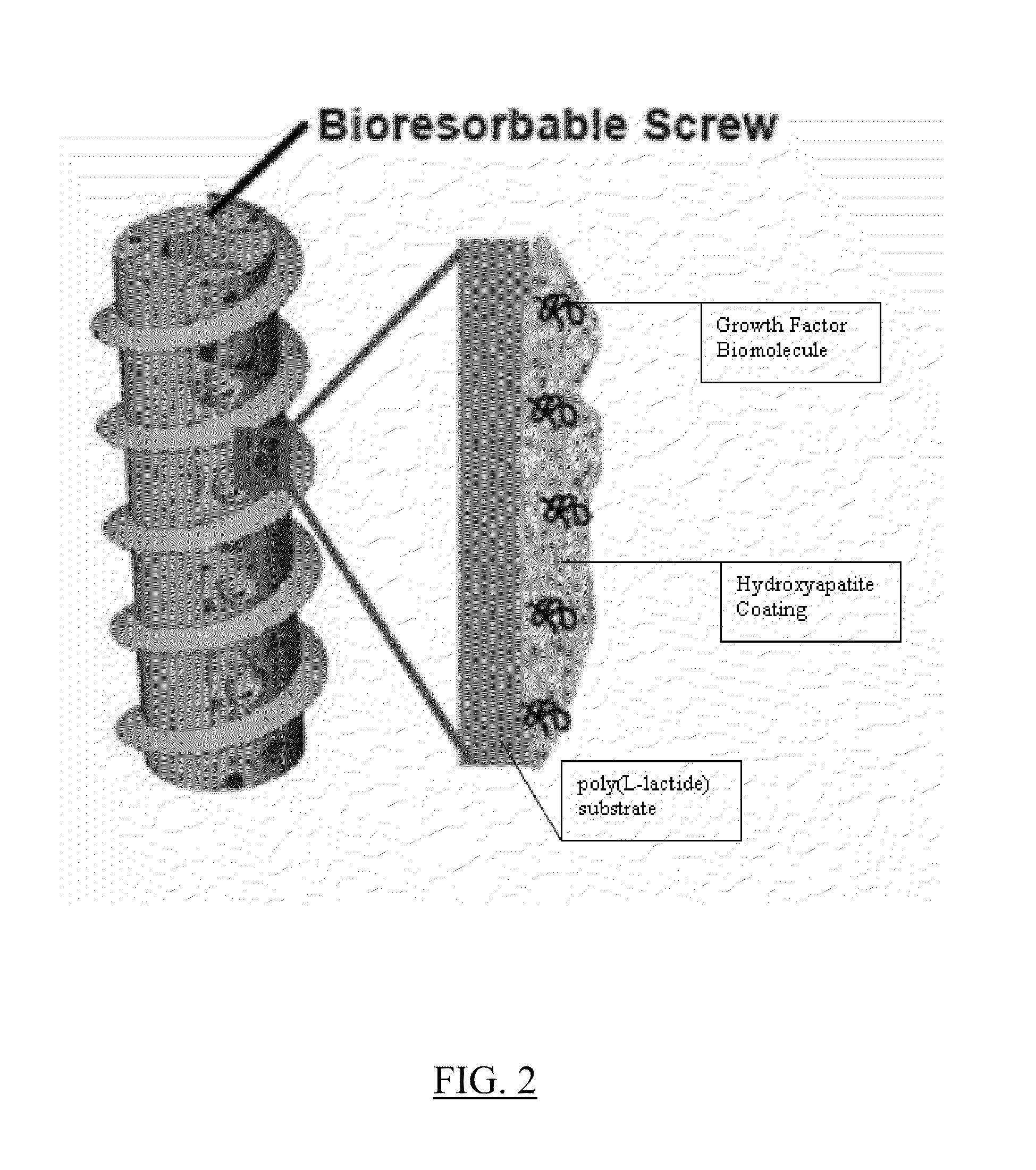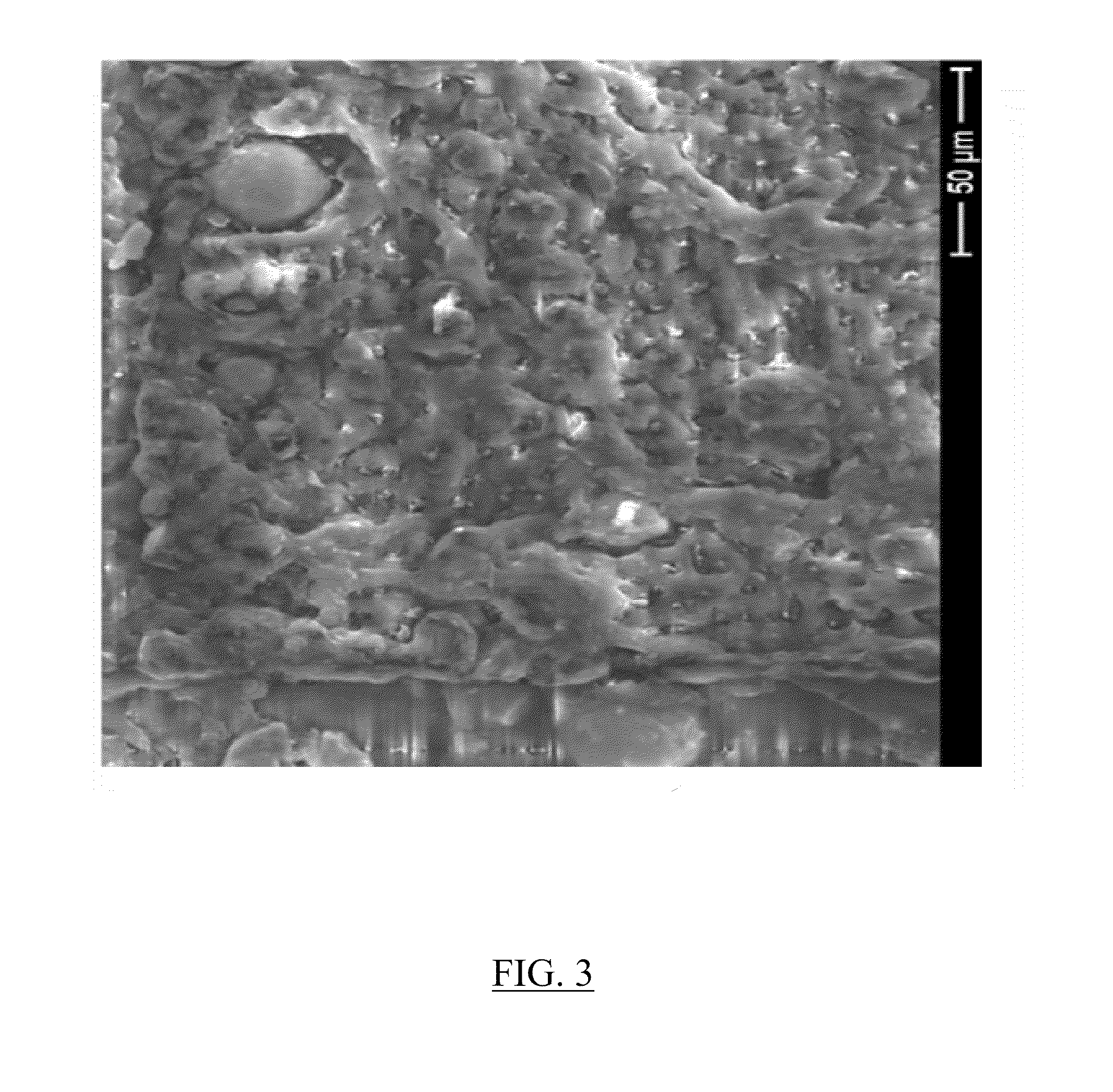Controlled release of biopharmaceutical growth factors from hydroxyapatite coating on bioresorbable interference screws used in cruciate ligament reconstruction surgery
a technology of bioresorbable interference screws and growth factors, which is applied in the direction of peptide/protein ingredients, powder delivery, and internal osteosynthesis, can solve the problems of limited implementation of various therapies, slow translation of new technologies from the laboratory to the clinic, and limited new and effective therapies (designed to induce bone regeneration in skeletal defects or injuries). to achieve the effect of reducing the widening of the tunnel
- Summary
- Abstract
- Description
- Claims
- Application Information
AI Technical Summary
Benefits of technology
Problems solved by technology
Method used
Image
Examples
example 1
[0108]Growing continuous / contiguous CaP coatings on bioresorbable bone screws. The example will demonstrate controlled CaP mineral growth on poly(L-lactide) interference screws; demonstrate controlled mineral dissolution; and characterize composition, phase, morphology, and continuity of the mineral coating.
example 2
[0109]Another example will demonstrate incorporation of growth factors into CaP coatings on resorbable bone screws. The example will demonstrate controlled incorporation / release of bone morphogenetic protein-2 (BMP-2) to / from the CaP coating; confirm bioactivity of released BMP-2; and characterize initial efficacy of biologically active bone screws in a sheep ligament reconstruction model, which is predictable model for human ACL reconstruction. (See, Markel M, et al., Protocol #V1243: “Histologic and Biomechanical Comparison of Suspensory and Aperture Fixation of Tendons within a Tibial Bone Tunnel in a Sheep Model”). The example will also demonstrate enhanced graft-bone healing in a sheep tibial bone tunnel. The example will also show that the instant bioactive screws can be included in standard clinical surgical procedures.
example 3
[0110]Mineral growth on bioresorbable polymers. A method for growing mineral coatings on poly(α-hydroxy ester) materials, including poly(L-lactide), poly(lactide-co-glycolide), and poly(r-caprolactone). (See, Murphy W L, et al., Biomaterials 2000, 21:2521-2527; Murphy W L, et al., J Am Chem Soc 2002, 124:1910-1917; Murphy W L, et al., J Dent Res 2004, 83:204-210; and Murphy W L, et al., Biomaterials 2005, 26:303-310). The method does not require solvent or heat, which is advantageous. The method is conducted at room temperature.
[0111]Grow continuous calcium phosphate (CaP) coatings on bioresorbable bone screws using surface hydrolysis and MSBF incubation. To induce formation of CaP-based mineral layer, PLLA interference screws (Smith & Nephew, Inc.) will be surface hydrolyzed via a 30 min. treatment in 0.1M NaOH, followed by incubation in a modified simulated body fluid (mSBF) for mineral nucleation and growth. The mSBF solution contains the ionic constituents of blood plasma, with ...
PUM
| Property | Measurement | Unit |
|---|---|---|
| sizes | aaaaa | aaaaa |
| bioresorbable | aaaaa | aaaaa |
| length | aaaaa | aaaaa |
Abstract
Description
Claims
Application Information
 Login to View More
Login to View More - R&D
- Intellectual Property
- Life Sciences
- Materials
- Tech Scout
- Unparalleled Data Quality
- Higher Quality Content
- 60% Fewer Hallucinations
Browse by: Latest US Patents, China's latest patents, Technical Efficacy Thesaurus, Application Domain, Technology Topic, Popular Technical Reports.
© 2025 PatSnap. All rights reserved.Legal|Privacy policy|Modern Slavery Act Transparency Statement|Sitemap|About US| Contact US: help@patsnap.com



